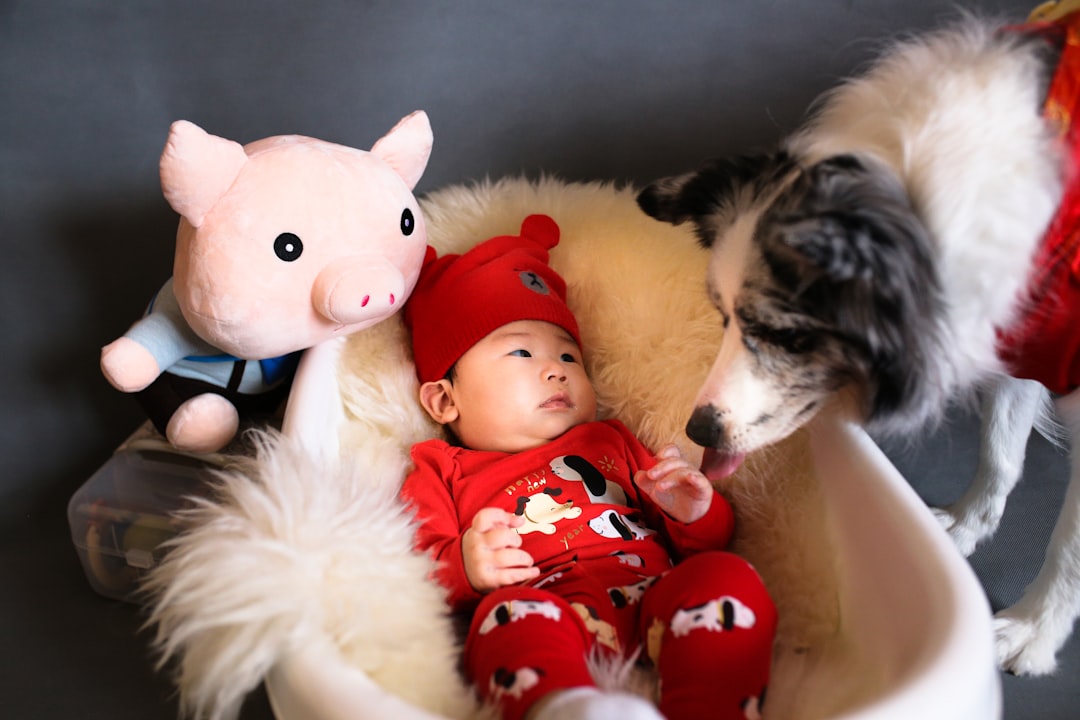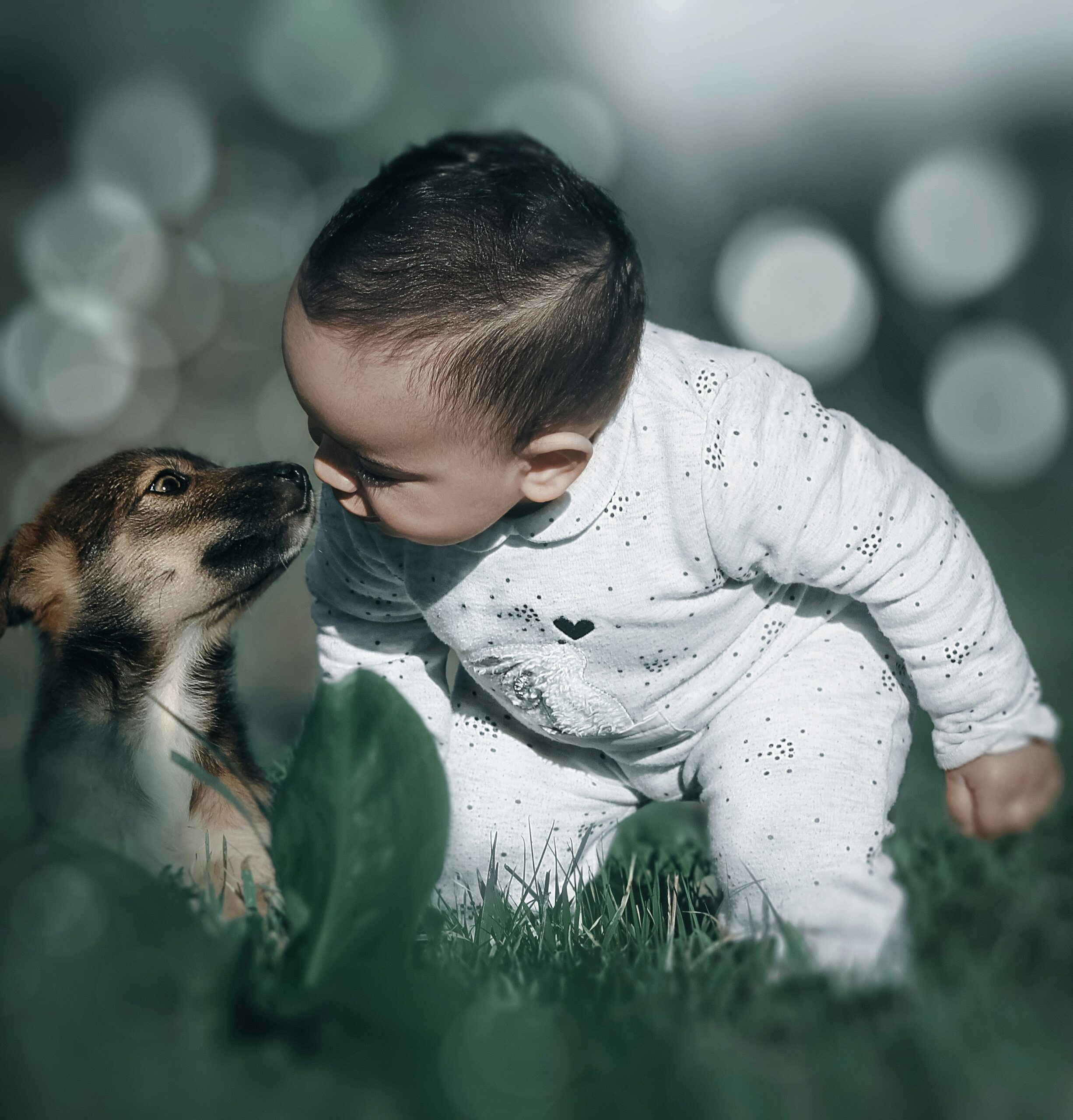Nurturing a Lifelong Friendship: Building Strong Bonds Between Dogs and Babies
Building a Strong Bond Between Dogs and Babies: Discover the benefits of fostering a loving relationship between dogs and babies, including improved emotional development and empathy skills for children, reduced stress and anxiety, and higher self-esteem, while also providing strategies for safe interactions and addressing potential challenges.
Introduction to the Importance of Building a Strong Bond Between Dogs and Babies
Creating a strong bond between dogs and babies is not only beneficial for the child’s emotional development, but also fosters empathy skills. Dogs play a crucial role in providing emotional support, companionship, and instilling a sense of responsibility in children. This bond between dogs and babies can lead to a loving and caring environment that has long-term positive effects on both parties.
An example illustrating this is when a baby starts to crawl, and the family dog patiently follows alongside, acting as a guardian and companion. The baby’s laughter and the dog’s wagging tail create a heartwarming scene that showcases the strong bond between them.
Benefits of Dog-Baby Bonds
The relationship between dogs and babies offers a myriad of benefits, including helping children develop empathy by learning to understand and respond to the needs of their furry friends. Research indicates that children growing up with pets tend to have higher self-esteem and improved social skills. Additionally, having a dog in a child’s life can reduce feelings of stress, anxiety, and loneliness.
For instance, a baby reaching out to pet a dog and the dog responding with gentle licks and tail wags demonstrate the reciprocal affection and trust that can develop between them.
 Understanding Dog Body Language for Safe Interactions
Understanding Dog Body Language for Safe Interactions
Recognizing and interpreting dog body language is crucial for ensuring safe interactions between dogs and babies. Signs of stress in dogs, such as yawning or avoiding eye contact, indicate discomfort and should be respected. On the other hand, positive cues like wagging tails and relaxed posture show that the dog is comfortable and enjoying the interaction.
An example of this is when a dog approaches a baby with a relaxed body posture, wagging tail, and soft eye contact, signaling a friendly and positive intention. Teaching children to understand and respond appropriately to these cues can prevent misunderstandings and promote a harmonious relationship.
Strategies for Building Strong Bonds Between Dogs and Babies
Encouraging positive interactions through supervised playtime and gentle petting can help build trust between dogs and babies. Involving children in feeding and grooming routines creates a sense of responsibility and strengthens the connection between the child and the dog. Establishing a routine that includes designated playtime for both the dog and the baby further enhances their bond.
For example, a family engaging in a daily routine of playtime where the baby tosses a ball for the dog to fetch showcases a shared activity that fosters joy and companionship between them.
Supervision and Safety Measures for Dog-Baby Interactions
It is essential to always supervise interactions between dogs and babies to prevent accidents and ensure the safety of both. Providing a safe space for the dog to retreat to if needed during interactions with the baby can help alleviate any stress or discomfort. Educating children on proper behavior around dogs, such as avoiding pulling tails or ears, is crucial in preventing negative reactions and fostering a respectful relationship.
An instance of this is when a baby crawls towards a resting dog, and the parent gently redirects the baby’s attention to a toy, teaching them to approach the dog calmly and respectfully.
Addressing Challenges and Potential Issues
Addressing any signs of jealousy from the dog towards the baby by giving equal attention and affection to both parties is essential for maintaining a harmonious relationship. Introducing the baby’s scent to the dog before the baby arrives home can help the dog familiarize itself with the new family member. Seeking professional help if the dog displays persistent signs of aggression or discomfort around the baby is crucial in addressing and resolving any potential issues.
For example, if the dog shows signs of jealousy when the baby is being held, the family can implement strategies to ensure the dog receives attention and affection to prevent feelings of neglect.
 Long-Term Benefits and Considerations for Maintaining the Bond
Long-Term Benefits and Considerations for Maintaining the Bond
A strong bond between a child and a dog can lead to improved emotional intelligence and social skills in the child. It is important to consider the needs of both the dog and the baby as they grow and adjust routines to maintain a positive relationship. Regular vet check-ups, training, and socialization for both the dog and the baby are vital in ensuring their well-being and the longevity of their bond.
An example of this is when a child learns to respect the dog’s boundaries as they grow older, showing empathy and understanding towards their furry companion’s needs.
Conclusion on Nurturing a Lasting Connection Between Dogs and Babies
In conclusion, fostering a strong bond between dogs and babies is not only rewarding but also vital for the well-being and development of both parties [5]. Prioritizing safety, understanding, and patience in building and maintaining the relationship between dogs and babies is key to creating a harmonious family environment. The lifelong benefits of a loving and supportive bond between dogs and babies contribute to a nurturing and caring atmosphere that enriches the lives of all involved.



 Book Appointment
Book Appointment